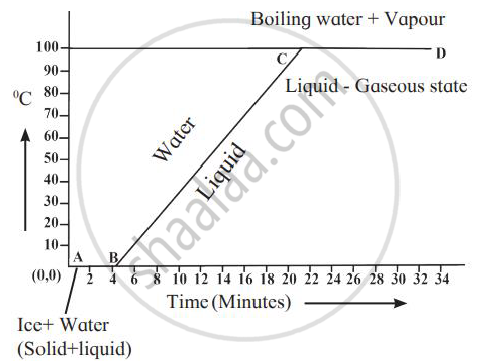Advertisements
Advertisements
प्रश्न
1 g ice of 0℃ melts to form 1 g water at 0℃. State whether the latent heat is absorbed or given out by ice.
उत्तर
Ice turns into water when it absorbs latent heat.
APPEARS IN
संबंधित प्रश्न
Write the approximate value of specific latent heat of ice.
- Which requires more heat: 1 g ice at 0℃ or 1 g water at 0℃ to raise its temperature to 10℃?
- Explain your answer in part (a).
Explain the following:
The surrounding become pleasantly warm when water in a lake starts freezing in cold countries.
During transformation of liquid phase to solid phase, the latent heat is ______.
Liquid ammonia is used in ice factory for making ice from water. If water at 20°C is to be converted into 2 kg ice at 0°C, how many grams of ammonia are to be evaporated? (Given: The latent heat of vaporization of ammonia = 341 cal/g)
A thermally insulated pot has 150 g ice at temperature 0°C. How much steam of 100°C has to be mixed to it, so that water of temperature 50°C will be obtained? (Given : latent heat of melting of ice = 80 cal/g, latent heat of vaporization of water = 540 cal/g, specific heat of water = 1 cal/g °C)
Explain the following temperature vs time graph.

Why does weather become pleasant when it starts freezing in cold countries?
Define the term ‘specific latent heat of fusion’ of a substance.
State two advantages of the high specific latent heat capacity of steam, which is about 226 × 104 J/kg?
Derive an expression for the amount of heat given out or taken up, when its temperature falls or rises by t°C.
What observation you will record and how will you determine the specific latent heat of fusion of ice?
Calculate the total amount of heat required to convert 100g ice at 0°C to steam at 100°C.
(Specific latent heat of fusion of ice = 336 J/g, specific latent heat of vaporization of steam = 2260 J/g, specific heat capacity of water = 4.2 J/g°C).
1 kg of water is contained in a 1.25 kW kettle. Assuming specific heat capacity of water = 4.2 J/g °C and specific latent heat of vaporization = 2260 J/g, calculate:
(i) the time taken for the temperature of water to rise from 25°C to its boiling point,
(ii) the mass of water which evaporates per minute from the boiling water.
Match the columns.
| Column A | Column B |
| 1) Specific latent heat of fusion | a) Air saturated with vapour |
| 2) Specific latent heat of vaporisation | b) Solid converts into liquid |
| 3) Dew point temperature | c) liquid converts into gas |
Write the name.
The phase in which solid substances are converted into liquid.
Write scientific reason.
Use a pressure cooker to cook food in cold air.
